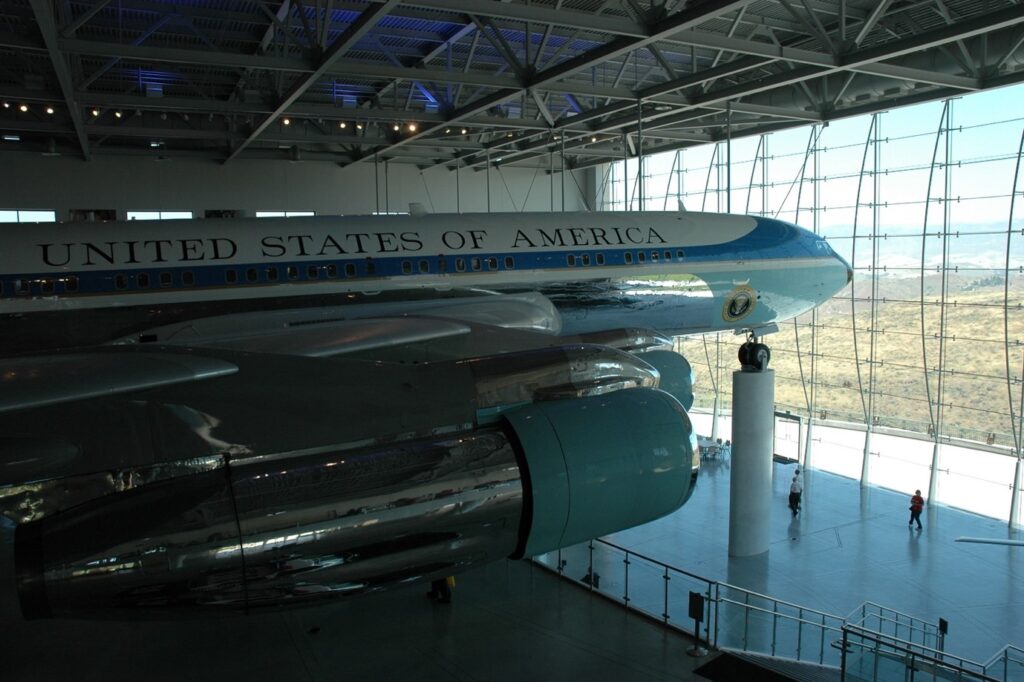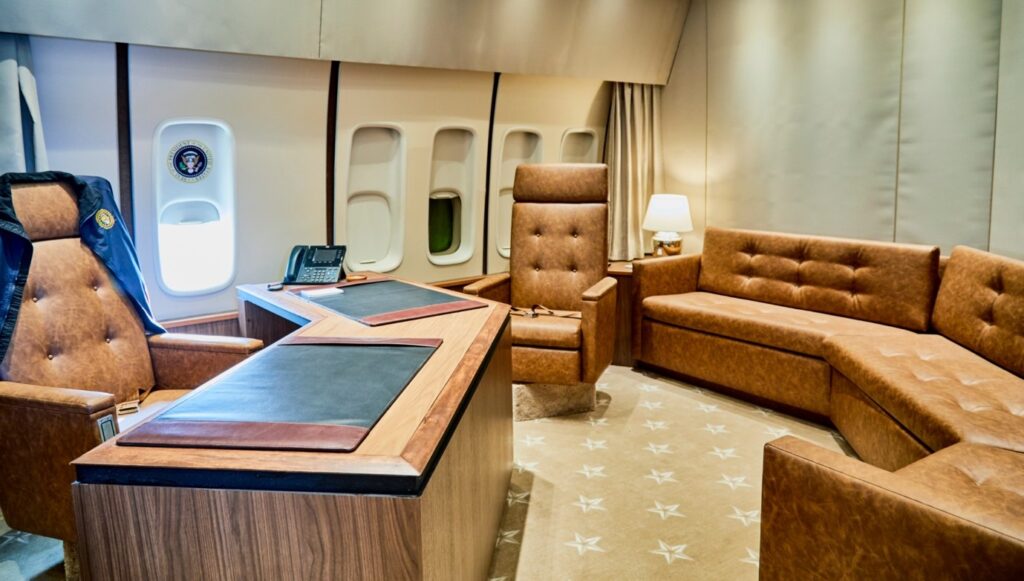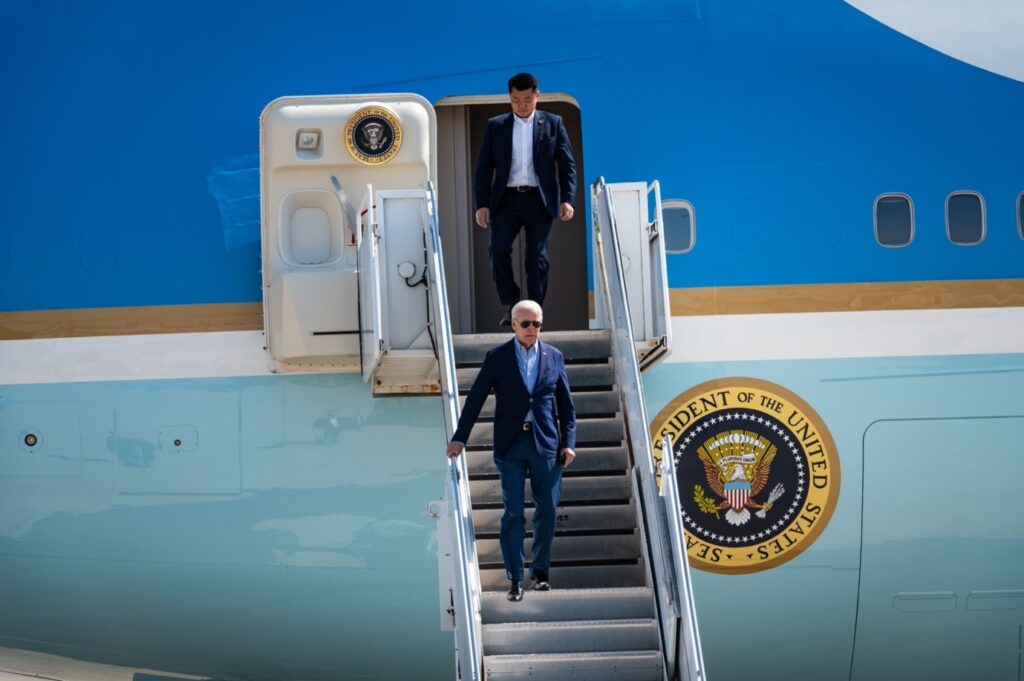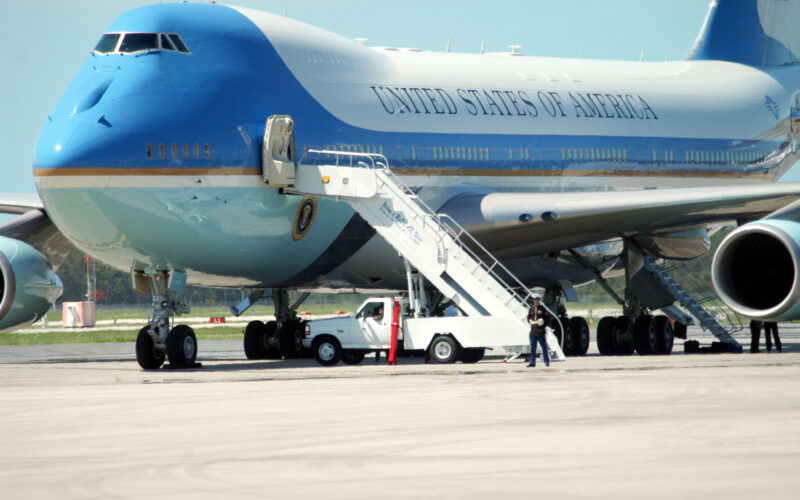Air Force One, the official aircraft of the President of the United States (US), is an iconic symbol of presidential power and prestige. From its distinctive appearance to its advanced capabilities, this extraordinary flying fortress has served as a symbol of American strength and leadership for decades.
In this article, we will delve into the history, significance and legacy of the Air Force One plane, shedding light on why it holds such a special place in American history.
Origins and evolution of Air Force One
The concept of an aircraft specifically designated for presidential use dates back to the early 1940s. It was during World War II when President Franklin D. Roosevelt became the first sitting US president to travel by airplane while in office. At that time, the president’s plane was not officially referred to as Air Force One. Rather, the aircraft used for presidential travel was a modified military transport aircraft, often a C-54 Skymaster.
The name ‘Air Force One’ came into existence in 1953 when the US Air Force introduced the now-famous call sign for the presidential plane. The change was made to establish a clear distinction between the president’s aircraft and any other planes operating under the same call signs. The term ‘Air Force One’ signifies that the aircraft is under the command and authority of the President of the US.
From a technical standpoint, the term “Air Force One” applies to any Air Force aircraft that carries the President. However, it has become customary to use this term specifically for designated planes that are equipped for transporting the Commander-in-Chief.

Over the years, presidential aircraft have evolved significantly in terms of technology, size and capabilities. From the early C-54 Skymaster, the fleet of presidential aircraft transitioned to jet-powered planes like the VC-137C, based on the Boeing 707, during the 1960s. These planes featured improved speed and range, providing a more efficient means of travel for the president.
In the 1990s, the VC-25A entered service as the latest incarnation of Air Force One. These highly customized Boeing 747-200B aircraft became the new standard for presidential travel. They were equipped with advanced communication systems, enhanced security features, and luxurious accommodations.
Recently, plans have been underway to replace the aging VC-25A aircraft with the next generation of VC-25B. The two new planes, based on the Boeing 747-8, are expected to be more fuel-efficient, technologically advanced and capable of meeting the demands of presidential travel well into the near-future. It is still unknown when they will enter the service.
Design and features of Air Force One
Air Force One’s exterior is instantly recognizable with its polished blue and white livery, adorned with the presidential seal. This iconic color scheme deploys the official colors of the US, representing the nation’s unity and strength. The presence of the presidential seal further emphasizes the aircraft’s unique status and association with the president.
The plane is equipped with state-of-the-art communication systems that allow the president to remain in constant contact with global leaders, military commanders and the White House. These systems include secure and encrypted channels for confidential communications, satellite connectivity for uninterrupted communication even during long-haul flights, and a highly sophisticated command center that enables the president to conduct meetings and coordinate operations while in the air.
Air Force One also boasts an array of advanced security features to protect the president and the aircraft. These include advanced missile defense systems, secure and hardened communication systems to guard against hacking and eavesdropping, and advanced radar systems for early detection of potential threats. The aircraft is also equipped with countermeasures to deter and defend against airborne attacks.
In addition to its security measures, Air Force One is designed to be self-sufficient during long-distance flights. It has the capability to refuel in mid-air, allowing it to remain airborne for extended periods without the need for frequent stops. This ensures the president’s safety and allows for seamless travel to remote or high-risk locations.
Presidential accommodations
The interiors of Air Force One are meticulously designed to provide the president and their staff with a comfortable and functional space during flight. The aircraft features private suites for the president and their family, including a bedroom, bathroom and dedicated office space. The cabin also includes seating areas for advisors, security personnel and members of the press. The furnishings and décor are chosen to reflect the elegance and prestige of the presidency.
The aircraft is also equipped with secure communication centers that enable the president to conduct sensitive discussions and exchange classified information while airborne. These centers are equipped with advanced encryption technology, secure video conferencing capabilities, and secure data transmission systems. This ensures that the president can communicate securely with the White House, military commanders, and other world leaders during their travels.
In addition, Air Force One is equipped with medical facilities and emergency features to address any health issues that may arise during the president’s travels. The aircraft has a fully-stocked medical suite, including an operating room, a pharmacy, and equipment for emergency medical procedures. Highly trained medical personnel are also present on board to provide immediate medical care if needed. Strikingly, Air Force One has the capability to function as a mobile command center during emergencies, ensuring the president’s ability to coordinate critical operations even while in the air.

Presidential missions and global reach
Air Force One serves as a powerful tool for the president to engage in diplomacy and conduct international visits. It allows the president to travel quickly and efficiently, enabling them to participate in high-level meetings, state visits and international conferences. Air Force One’s presence in foreign countries symbolizes the importance and commitment of the US to global affairs, showcasing American leadership and strengthening diplomatic relationships.
The aircraft can be instrumental in emergency evacuations and crisis response scenarios. In times of natural disasters, civil unrest or national emergencies, the president may use Air Force One to swiftly evacuate from affected areas or travel to command centers to coordinate relief efforts.
During times of conflict or national security crises, Air Force One plays a crucial role in supporting military operations and providing a secure platform for the president’s command and control functions. The aircraft’s advanced communication systems allow the president to stay connected with military commanders, intelligence agencies and other key decision-makers.
The legacy of Air Force One
Air Force One has become a powerful symbol of American leadership and influence worldwide. Its iconic presence represents the strength, stability and prestige of the US. The aircraft serves as a visual reminder of the nation’s commitment to democracy, diplomacy and global engagement. As it lands on foreign soil, Air Force One signals the arrival of the US president and reinforces the importance of bilateral and international relationships.
The plane has witnessed, and indeed played a role in, numerous significant historical moments. It has been present during presidential inaugurations, when the newly-elected presidents take their oath of office while onboard the aircraft. Additionally, several major policy decisions, such as the signing of important legislation or international agreements, have occurred aboard Air Force One, underscoring the gravity and significance of these events.
It has also captured the imagination of the public and has become an iconic symbol in popular culture. The aircraft has made appearances in films, television shows and literature, showcasing its significance and allure. Its portrayal in popular media often emphasizes the power and authority associated with the presidency and the unique status of Air Force One.

Air Force One: security and operations
Air Force One operates under stringent security protocols to safeguard the president and the aircraft. These protocols include thorough background checks for all personnel involved, comprehensive security screenings for passengers and cargo, and advanced security measures to protect against potential threats. The aircraft is equipped with defense systems and staffed by highly trained security personnel to ensure the safety and integrity of Air Force One.
The crew and personnel responsible for operating and maintaining Air Force One are required to go through extensive training to ensure the highest level of professionalism and expertise. Pilots, navigators, communication specialists and maintenance personnel undergo rigorous training programs to meet the unique requirements of presidential travel.
Air Force One is part of a larger fleet of aircraft maintained specifically for presidential use. These aircraft undergo regular inspections and maintenance to ensure that they are in optimal condition for their particular purpose. Meticulous attention is given to all aspects of its operation, including engine performance, avionics systems, interior functionality and safety features.


